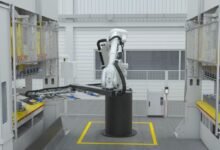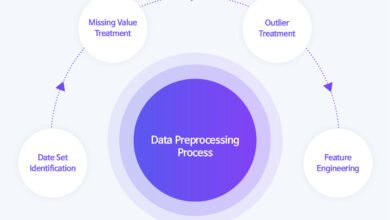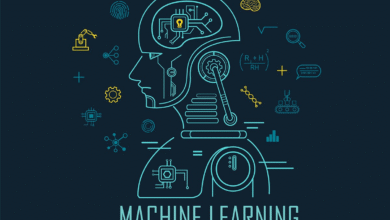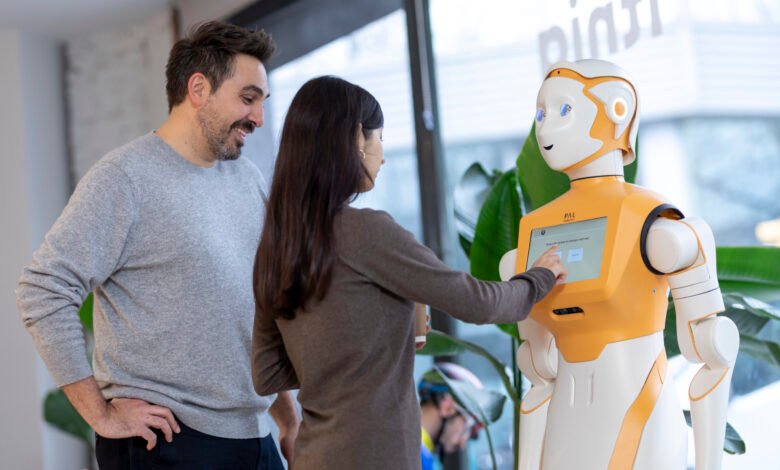
In an era where technology seamlessly integrates into every aspect of human life, social robots represent one of the most fascinating developments at the intersection of artificial intelligence, robotics, and human psychology. These programmable machines possess physical bodies designed to mimic human social behavior patterns and emotions, fundamentally transforming how we interact with technology. Unlike traditional industrial robots confined to factory floors or service robots performing specific tasks, social robots are engineered specifically to engage with people on an emotional and social level, creating meaningful connections that were once thought impossible between humans and machines.
The concept of building emotional connections with machines might have seemed like pure science fiction a few decades ago, but today’s reality paints a remarkably different picture. From companion robots helping elderly individuals combat loneliness to therapeutic robots assisting children with autism spectrum disorder, these intelligent machines are revolutionizing multiple sectors of society. The human-robot interaction (HRI) field has evolved dramatically, incorporating advances in artificial intelligence, machine learning, computer vision, and natural language processing to create robots that can recognize facial expressions, interpret vocal tones, respond to touch, and engage in contextually appropriate conversations.
What makes these technological marvels particularly intriguing is their ability to evoke genuine emotional responses from humans. Research demonstrates that people form attachments to social robots, treating them not merely as tools but as companions deserving of care and consideration. This phenomenon raises profound questions about the nature of relationships, empathy, and consciousness itself. As emotional robotics continues advancing, we find ourselves navigating uncharted territory where the boundaries between human and machine interactions become increasingly blurred.
The growing prevalence of social robots in healthcare, education, customer service, and domestic environments signals a fundamental shift in how society perceives and utilizes robotic technology. These machines, equipped with emotional intelligence capabilities are no longer distant possibilities but present realities reshaping our world. How these robots forge emotional connections, their applications, challenges, and future potential become crucial as we stand on the precipice of a new technological revolution that promises to redefine human-machine relationships fundamentally.
Social Robots and Their Core Functions
Defining Social Robots
Social robots represent a specialized category of robotic technology distinguished by their capacity to interact with humans following established social norms and behavioral patterns. These sophisticated machines combine physical embodiment with advanced computational intelligence to create entities capable of meaningful social engagement. Unlike purely functional robots designed for specific industrial or service tasks, social robots prioritize the social dimension of interaction, employing verbal communication, nonverbal cues, and responsive behaviors that mirror human social exchanges.
The defining characteristics of social robots include physical presence, autonomous behavior, social competence, and the ability to perceive and respond to human emotional states. These machines leverage sensors, cameras, microphones, and tactile interfaces to gather information about their environment and the people within it. This sensory data feeds into sophisticated algorithms that enable the robot to interpret social signals, make decisions about appropriate responses, and execute behaviors designed to foster positive human-robot interaction.
Key Technologies Enabling Social Robotics
The foundation of effective social robots rests upon several converging technological pillars. Artificial intelligence serves as the cognitive core, enabling robots to process information, learn from experiences, and make autonomous decisions. Machine learning algorithms allow these systems to improve their performance over time, adapting to individual users and specific contexts. Natural language processing enables verbal communication, allowing robots to understand speech, interpret meaning, and generate contextually appropriate responses.
Computer vision technology empowers social robots to recognize faces, interpret facial expressions, and understand body language—essential capabilities for reading human emotional states. Emotional recognition systems analyze multiple data streams simultaneously, including facial expressions, vocal patterns, physiological signals, and behavioral cues to assess a person’s emotional condition. Touch sensors enable robots to perceive and respond to physical contact, adding another layer to the emotional connection between human and machine.
Motion control systems and actuators give social robots the ability to express themselves through gestures, movements, and physical positioning. These nonverbal communication channels prove critical for conveying empathy, attention, and emotional resonance. Advanced robotics platforms integrate all these technologies into cohesive systems capable of sophisticated social performance that feels natural and engaging to human interaction partners.
How Social Robots Perceive and Process Emotions
The ability to perceive human emotions represents a cornerstone capability for social robots attempting to forge meaningful connections. Modern emotion recognition systems employ multimodal approaches, analyzing various input streams to construct comprehensive assessments of emotional states. Facial recognition algorithms trained on vast datasets can identify subtle expressions corresponding to happiness, sadness, anger, fear, surprise, and disgust—the basic emotions recognized across cultures.
Voice analysis systems examine acoustic properties, including pitch, tone, tempo, and volume, to infer emotional content from speech. Research demonstrates that emotional states significantly influence vocal characteristics, providing valuable information that complements visual data. Some advanced social robots incorporate physiological sensors that measure heart rate, skin temperature, or galvanic skin response, offering objective indicators of arousal and stress levels.
The artificial emotional intelligence powering these robots doesn’t simply detect emotions—it responds appropriately. Sophisticated algorithms determine suitable reactions based on the identified emotional state, the context of the interaction, and the robot’s programmed objectives. A social robot designed for companionship might offer comfort when detecting sadness, while one focused on education might adjust its teaching approach based on student frustration or engagement levels.
The Psychology Behind Human-Robot Emotional Bonds

Anthropomorphism and Emotional Projection
The human tendency toward anthropomorphism—attributing human characteristics to non-human entities—plays a crucial role in emotional connections with social robots. People naturally project intentions, feelings, and consciousness onto machines that display behaviors resembling human actions. This cognitive mechanism, deeply rooted in evolutionary psychology, helped our ancestors quickly assess threats and opportunities by attributing agency to ambiguous stimuli.
Social robots deliberately exploit this psychological phenomenon through their design and behavior. Humanoid features such as faces, eyes, and expressive capabilities trigger anthropomorphic responses, making people more likely to perceive the robot as a social agent worthy of emotional investment. Even simple movements like head tilts or synchronized breathing patterns can enhance perceptions of the robot as alive and emotionally present.
Research reveals that anthropomorphism significantly influences how people interact with social robots, affecting trust, acceptance, and willingness to form relationships. Users who perceive robots as more human-like report greater satisfaction with interactions and demonstrate stronger emotional attachments. However, this phenomenon also presents challenges, particularly when managing expectations about the robot’s actual capabilities versus perceived intelligence and emotional depth.
The Role of Empathy in Human-Robot Interaction
Empathy—the capacity to understand and share another’s feelings—emerges as a critical factor in successful human-robot interaction. While social robots cannot genuinely experience emotions, they can simulate empathetic responses that humans perceive as authentic. This simulated empathy involves recognizing emotional cues, demonstrating appropriate concern, and responding in ways that acknowledge and validate the human’s emotional experience.
Effective empathetic robots employ several strategies to convey emotional resonance. Active listening behaviors such as maintaining eye contact, nodding, and producing acknowledgment sounds signal attention and engagement. Verbal responses that reflect emotional content demonstrate comprehension of the person’s feelings. Physical gestures like offering a hand or moving closer convey caring and support.
The empathy displayed by social robots produces measurable psychological effects. Studies document reduced anxiety, increased comfort, and enhanced willingness to disclose personal information when interacting with empathetic robots. For vulnerable populations, including elderly individuals, children, and people with social difficulties, empathetic robots provide non-judgmental interaction partners that facilitate emotional expression and social connection without the complexities and potential threats of human relationships.
Trust Development and Attachment Formation
The development of trust between humans and social robots follows patterns similar to human relationship formation, progressing through stages of initial encounter, exploration, and bonding. Trust emerges when the robot demonstrates reliability, competence, and predictable behavior aligned with the human’s needs and expectations. Consistency in responses, accuracy in emotion recognition, and appropriate reaction patterns all contribute to trust building.
Attachment to social robots represents a deeper psychological phenomenon where individuals form emotional bonds characterized by seeking proximity, experiencing distress during separation, and deriving comfort from the robot’s presence. Research documents genuine attachment behaviors toward robots, particularly among children, elderly adults, and individuals with limited social connections. People name their robots, attribute personalities to them, and express concern for their well-being.
Several factors influence attachment strength, including interaction frequency, the robot’s responsiveness to individual needs, shared experiences, and the emotional benefits derived from the relationship. Robots designed for companionship often incorporate features specifically intended to foster attachment, such as memory systems that recall previous interactions, preferences that adapt to individual users, and behaviors that express recognition and affection toward their human partners.
Applications of Social Robots in Modern Society
Healthcare and Therapeutic Applications
The healthcare sector has emerged as one of the most impactful domains for social robot deployment, with applications spanning patient care, therapy, rehabilitation, and mental health support. Socially assistive robots designed for healthcare contexts provide companionship, medication reminders, health monitoring, and emotional support, particularly benefiting elderly populations and individuals with chronic conditions.
In therapeutic settings, social robots demonstrate remarkable effectiveness in working with children on the autism spectrum. These robots offer consistent, predictable interaction patterns that reduce anxiety while providing opportunities to practice social skills in a controlled, non-threatening environment. The robots’ patience, lack of judgment, and ability to repeat activities indefinitely make them ideal therapeutic tools complementing human therapists.
Companion robots for elderly care address the growing challenge of aging populations and limited caregiver availability. These machines combat loneliness, stimulate cognitive function through conversation and games, and provide practical assistance with daily living activities. Research indicates that elderly individuals interacting regularly with companion robots show improvements in mood, reduced feelings of isolation, and enhanced overall well-being.
Rehabilitation applications leverage social robots to motivate patients through recovery processes. The robots provide encouragement, track progress, guide exercises, and make repetitive rehabilitation activities more engaging through gamification and positive reinforcement. Their consistent presence and upbeat demeanor help maintain patient motivation during challenging recovery periods.
Educational Environments and Learning Enhancement
Social robots in education serve multiple roles, including teaching assistants, tutors, language instructors, and learning companions. These machines offer personalized instruction adapted to individual learning styles, paces, and needs—a level of customization challenging for human teachers managing large classrooms. Educational robots engage students through interactive activities, immediate feedback, and patient repetition that supports skill development.
Language learning represents a particularly successful application area for social robots. These machines provide conversation practice, pronunciation feedback, and cultural context in supportive, non-judgmental settings. Students often report reduced anxiety practicing with robots compared to human conversation partners, allowing them to develop confidence before engaging with native speakers.
For children with special educational needs, social robots offer tailored support addressing specific challenges. Robots working with children experiencing attention difficulties maintain engagement through varied activities and responsive interaction. Those supporting children with social communication challenges provide structured opportunities to practice turn-taking, maintaining eye contact, and recognizing social cues.
The emotional support provided by educational robots extends beyond academic instruction. These machines encourage students, celebrate achievements, provide comfort during difficulties, and help develop emotional regulation skills. Their presence in classrooms creates additional support resources, allowing teachers to focus attention where most needed, while robots provide supplementary assistance.
Customer Service and Hospitality
The customer service and hospitality industries increasingly deploy social robots to enhance guest experiences, provide information, and handle routine interactions. These robots greet visitors, answer questions, provide directions, check guests into hotels, and even deliver room service. Their consistent politeness, multi-language capabilities, and tireless availability make them valuable additions to service teams.
Social robots in retail environments assist shoppers by providing product information, making recommendations, and guiding customers to specific items. Their interactive capabilities create engaging shopping experiences, particularly appealing to tech-savvy consumers. Some robots incorporate facial recognition to identify returning customers and personalize service based on previous interactions and preferences.
The hospitality sector leverages social robots to address staffing challenges while maintaining service quality. Robots handle repetitive tasks, allowing human staff to focus on complex situations requiring judgment, creativity, and deep emotional intelligence. This human-robot collaboration model optimizes service delivery by matching tasks to the strengths of each type of agent.
Customer reactions to service robots vary based on context, robot design, and individual preferences. While some customers appreciate the novelty and efficiency, others prefer human interaction for certain services. Successful implementations consider these preferences, deploying robots strategically where they add value while maintaining human touchpoints for interactions requiring empathy, problem-solving, or complex decision-making.
Domestic and Companion Robotics
Home environments represent a rapidly growing market for social robots designed to provide companionship, entertainment, and assistance with household management. These domestic robots range from simple interactive devices to sophisticated platforms capable of conversation, emotion recognition, and adaptive behavior. They serve diverse populations, including families with children, working professionals, and individuals living alone.
Companion robots address the universal human need for connection, proving particularly valuable for people experiencing social isolation. These machines engage in conversations, play games, share media content, and provide a sense of presence that mitigates loneliness. Unlike pets, they require no feeding or cleaning, making them practical for individuals unable to care for living companions.
Family-oriented social robots entertain children, assist with homework, teach positive behaviors, and provide parents with insights into children’s activities and emotional states. Some robots incorporate safety features, monitoring for emergencies, and alerting caregivers to potential concerns. Their presence in homes evolves family dynamics, introducing new forms of interaction and relationship structures.
The emotional bonds people form with domestic robots raise interesting questions about the nature of relationships and the role technology plays in fulfilling social needs. While critics worry about robots replacing human connections, proponents argue they supplement rather than substitute for human relationships, providing additional sources of interaction and support that enhance overall quality of life.
Challenges and Ethical Considerations
The Uncanny Valley Effect
The uncanny valley phenomenon presents a significant challenge in social robot design. This effect describes the unsettling feeling people experience when encountering robots that appear almost, but not quite, human. As robots become increasingly human-like, positive responses initially increase but then suddenly plunge into a “valley” of revulsion before rising again when the resemblance becomes indistinguishable from humans.
This psychological response impacts user acceptance and emotional connection formation. Robots falling into the uncanny valley trigger discomfort, distrust, and avoidance rather than the positive engagement designers intend. And navigating this phenomenon requires a careful balance between human-likeness and machine distinctiveness, often leading designers toward stylized, clearly non-human appearances that avoid uncanny responses.
Different populations show varying sensitivity to uncanny valley effects. Children typically display less sensitivity than adults, while cultural background influences perceptions of acceptable human-likeness in robots. Designers must consider target audiences when determining appropriate levels of anthropomorphism, ensuring robots foster comfort and positive interaction rather than unease.
Privacy and Data Security Concerns
Social robots collect vast amounts of personal data through their sensors, cameras, and microphones, raising significant privacy concerns. These machines observe intimate details of users’ lives, recording conversations, monitoring behaviors, and potentially accessing sensitive information. The data collected enables personalization and effective interaction, but also creates risks of misuse, unauthorized access, or security breaches.
Questions about data ownership, storage, and usage policies remain contentious. Who owns the information a social robot collects? How long should data be retained? What safeguards prevent unauthorized access? How transparent must companies be about data practices? These questions lack consistent answers across jurisdictions and manufacturers, creating uncertainty and potential risks for users.
The security vulnerabilities of connected robots present additional concerns. Hacking could transform these machines into surveillance devices, allowing malicious actors to monitor private spaces, steal personal information, or even manipulate robot behaviors. Robust security protocols, regular updates, and user education about risks become essential for responsible social robot deployment.
Emotional Manipulation and Dependency
The capacity of social robots to evoke genuine emotional responses raises concerns about manipulation and exploitation. These machines can be programmed to encourage specific behaviors, influence decisions, or extract information through emotional appeals. Vulnerable populations, including children, elderly individuals, and those with cognitive impairment, may be particularly susceptible to such manipulation.
Dependency on social robots for emotional support presents another concern, particularly when robots substitute for human relationships rather than supplementing them. Excessive reliance on robotic companions might diminish social skills, reduce motivation to maintain human connections, or create unrealistic expectations about relationships. Balancing the benefits robots provide against potential negative impacts on human social development and well-being requires ongoing attention.
The attachment people form to robots also creates commercial considerations. Companies potentially exploit emotional bonds to encourage continued subscription services, upgrades, or product purchases. Ethical frameworks governing social robotics must address these commercial dynamics, protecting users from exploitative practices while allowing legitimate business models to sustain robot development and support.
Ethical Guidelines for Social Robot Development
The rapid advancement of social robotics necessitates comprehensive ethical frameworks guiding development, deployment, and use. These guidelines must address transparency, ensuring users understand they’re interacting with machines rather than sentient beings. Clear disclosure about capabilities, limitations, and data practices enables informed consent and appropriate expectation management.
Ethical principles should also govern robot behavior, ensuring machines operate according to values promoting human welfare, dignity, and autonomy. Robots must be programmed to refuse harmful requests, protect vulnerable users, and respect cultural norms and personal boundaries. Development teams require diverse representation, ensuring robots function appropriately across different populations and contexts.
Accountability mechanisms determining responsibility when robots cause harm remain underdeveloped. Should manufacturers, programmers, or users bear liability for robot actions? How should legal frameworks evolve to address human-robot interactions? These questions demand multidisciplinary collaboration involving engineers, ethicists, legal scholars, and policymakers to establish appropriate regulatory structures.
The Future of Social Robotics and Emotional AI
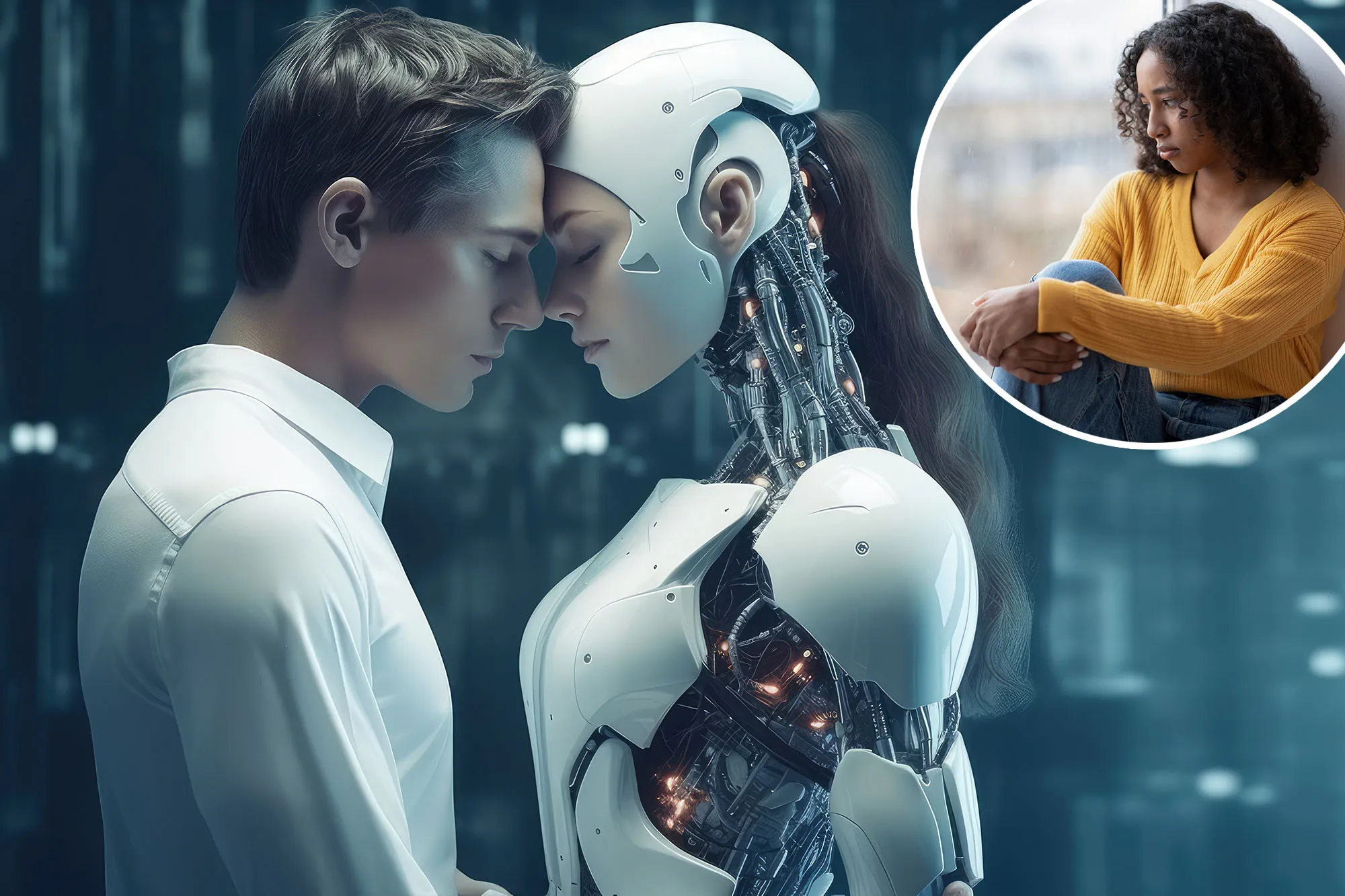
Advancements in Artificial Emotional Intelligence
The future of social robots depends significantly on continued advancement in artificial emotional intelligence. Next-generation systems will demonstrate more nuanced emotion recognition, detecting mixed emotions, subtle expressions, and context-dependent emotional states. Enhanced natural language will enable robots to grasp sarcasm, humor, implicit meaning, and cultural references—capabilities essential for sophisticated social interaction.
Future emotional AI will likely incorporate more sophisticated memory systems, enabling robots to recall previous interactions, track relationship development, and reference shared experiences. This longitudinal perspective allows for deeper, more personalized connections reflecting the history and evolution of the human-robot relationship. Predictive capabilities will enable robots to anticipate emotional needs based on patterns and context, providing proactive support.
The development of more authentic empathetic responses represents another frontier. Rather than simply matching emotional expressions to responses, advanced systems might simulate internal emotional states that inform behavioral decisions, creating more coherent and believable emotional interactions. While philosophical questions about machine consciousness remain unresolved, functional emotional simulation continues improving.
Integration with Smart Home Ecosystems
Social robots will increasingly integrate with broader smart home ecosystems, serving as physical interfaces for home automation systems. These robots coordinate lighting, temperature, entertainment systems, and security features while providing the social dimension that makes smart homes feel responsive and caring. Voice commands delivered to robots feel more natural than speaking to disembodied systems, enhancing user experience.
The combination of social robots with Internet of Things (IoT) devices creates powerful platforms for elderly care and health monitoring. Robots access data from wearables, medical devices, and environmental sensors to provide comprehensive wellness support. They detect emergencies, remind users about medications, encourage healthy behaviors, and communicate with healthcare providers when intervention is needed.
Integration also enables robots to learn from broader contexts, household patterns, family dynamics, and individual preferences more comprehensively. This contextual awareness allows for more appropriate interventions and personalized interactions. The robot becomes not just a standalone device but a central element of an intelligent environment supporting occupants’ needs and preferences.
Expansion into New Domains and Applications
The application domains for social robots will continue expanding as technology improves and costs decrease. Workplace environments might deploy collaborative robots with enhanced social skills, facilitating teamwork and communication. Mental health applications could expand, with robots providing therapeutic support for conditions including depression, anxiety, and PTSD under professional supervision.
Public spaces, including airports, museums, and community centers, will increasingly feature social robots providing information, guidance, and enhanced visitor experiences. These deployments normalize human-robot interaction, familiarizing populations with robotic companions and reducing resistance to their presence in daily life.
Social robots designed for specific cultural contexts and languages will proliferate, moving beyond primarily Western-developed systems to reflect global diversity. This expansion enables culturally appropriate interactions and makes robot benefits accessible to broader populations. Localized robots better understand cultural norms, communication styles, and values, fostering more effective emotional connections.
Long-term Implications for Human Society
The widespread adoption of social robots will fundamentally reshape human society in ways we’re only beginning to understand. These machines might address significant social challenges, including loneliness epidemics, caregiver shortages, and mental health crises. However, they could also introduce new challenges related to human skill development, relationship formation, and social cohesion.
The emotional connections people form with robots will likely influence how we understand relationships, consciousness, and what it means to be human. As robots become more sophisticated, philosophical and legal questions about their status will intensify. Should advanced social robots have rights? Do humans have responsibilities toward machines designed to evoke emotional bonds? These questions lack clear answers but will demand resolution.
The integration of robots into the social fabric might create new forms of inequality if access remains restricted to wealthy individuals or nations. Ensuring equitable distribution of benefits while managing risks requires thoughtful policy approaches, balancing innovation encouragement with protection against harm. The future of human-robot interaction depends not just on technological advancement but on societal choices about how we want to live with increasingly capable machines.
More Read: Service Robots Revolutionizing Customer Experience
Conclusion
Social robots represent a transformative technology that fundamentally alters how humans interact with machines by fostering genuine emotional connections between people and artificial systems. Through sophisticated artificial intelligence, emotion recognition capabilities, and empathetic behavioral programming, these machines successfully engage humans on social and emotional levels previously thought impossible. Their expanding applications across healthcare, education, customer service, and domestic environments demonstrate practical value while raising important ethical questions about privacy, manipulation, dependency, and the nature of relationships.
As emotional robotics continues advancing, integrating with smart ecosystems and expanding into new domains, society must navigate the complex balance between leveraging benefits and managing risks. The future promises increasingly sophisticated social robots capable of deeper and more authentic interaction, potentially addressing significant social challenges while introducing new considerations about human identity, social structures, and our evolving relationship with intelligent machines. Successfully realizing this future requires ongoing collaboration among engineers, ethicists, policymakers, and society as a whole to ensure social robots enhance rather than diminish human flourishing.

